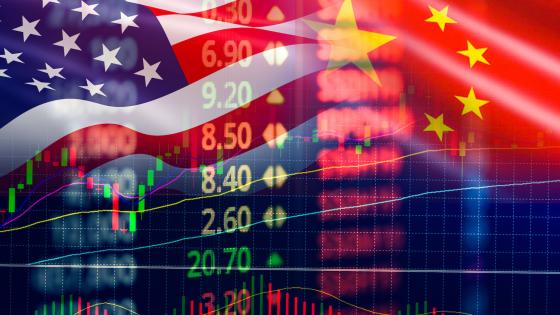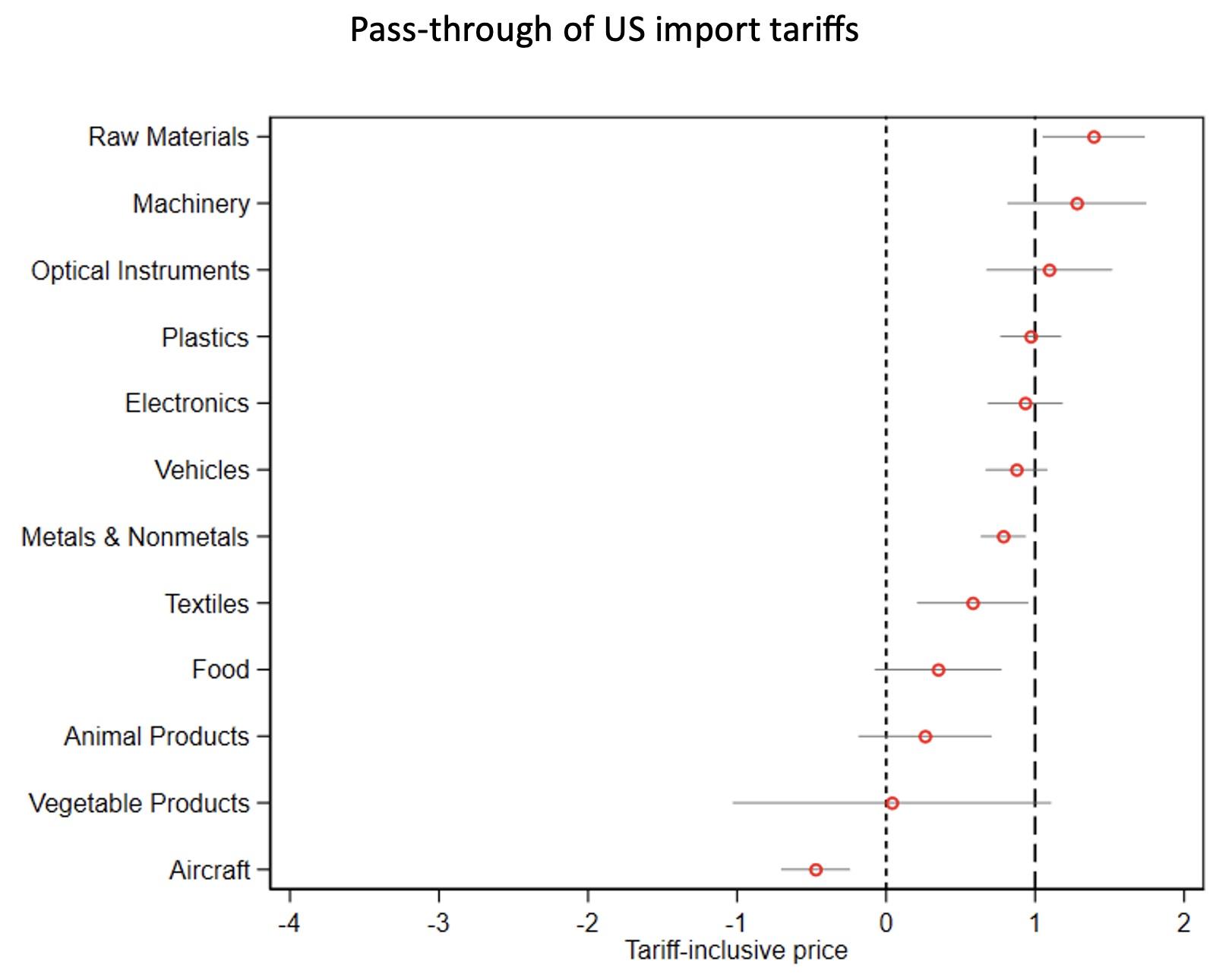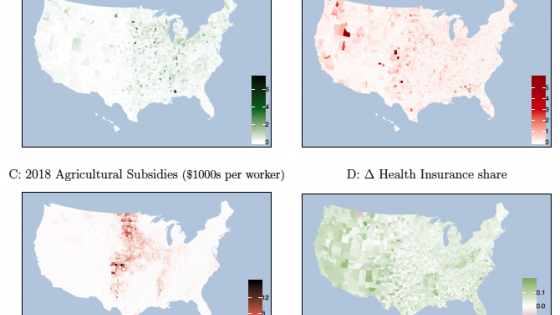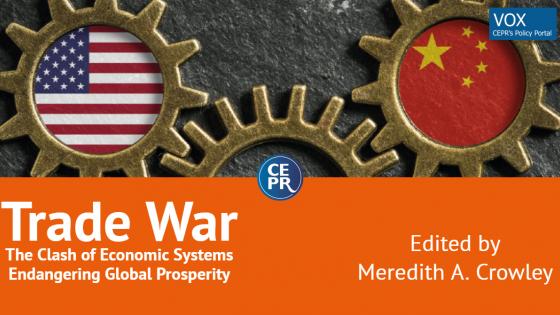The unprecedented tariff increases during the US-China trade war have sparked extensive discussions on the economic ramifications of trade protectionism. In our recent paper (Feng et al. 2023), we explore the question of who paid for the tariffs. We find that the US tariffs mostly fell on the US importers, consistent with the literature (Amiti et al. 2019, Fajgelbaum et al. 2020, Cavallo et al. 2021). In contrast, Chinese importers only shouldered about two-thirds of the Chinese retaliatory tariffs. The findings are surprising for two reasons. First, the average pass-through in China was considerably lower than that in the US. Second, complete tariff pass-through is uncommon in the pass-through literature (Fajgelbaum and Khandelwal 2021), particularly for the US, which is a large economy with significant market power to influence the terms of trade.
Why does the US have a higher average tariff pass-through? By decomposing the average pass-through, we show that the puzzling US-China difference can mainly be attributed to their different import structures, product heterogeneity in tariff pass-through, and trade policies. More details on the econometric decomposition are shown in Feng et al. (2023).
Import structure and product heterogeneity
Figure 1 shows the import structures of China and the US by broad product category.
Primary Chinese imports from the US included agricultural products such as soybeans and corn and high-end manufacturing goods such as aircraft and vehicles. In contrast, the US mainly imported labour-intensive products from China, such as electronics.
Figure 1 Share of import value in 2017 by product category
We then estimate tariff pass-through across broad product categories, defined based on HS-2 codes classifications. As shown in Figure 2, tariff pass-through differs across products. Agricultural goods (such as vegetables and animal products) and high-tech manufactured products (such as aircraft) tend to have low tariff pass-through rates. Moreover, the tariff pass-through for the same products in the two countries can differ. While the pass-through rates for aircraft, vehicles, and plastics are similar in the two countries, the pass-through rates are very different for textiles, food, and machinery.
Regarding the determinants of heterogeneity in tariff pass-through, we show that a higher ratio of import demand elasticity over export supply elasticity leads to lower tariff pass-through under perfect competition.
We learn from Figure 1 and Figure 2 that the average tariff pass-through was higher for the US because the US imported more products with higher pass-through from China, such as electronics. In contrast, China imported more products with lower tariff pass-through from the US, such as agricultural products. Moreover, in the presence of a skewed import distribution (Figure 1) and substantial product heterogeneity in tariff pass-through (Figure 2), it is critical to weigh the regressions (Solon et al. 2015). The intuition is similar to using expenditure shares to construct price indices, such as the CPI.
Figure 2 Tariff pass-through by product category
Tariff regime
The two countries adopted contrasting strategies during the trade war and imposed punitive tariffs on different products, which also affected the average pass-through. The Trump administration was primarily concerned about future competition from China in high-tech sectors. The main intentions went beyond short-run economic interests, such as manipulating the terms of trade and reducing the trade deficit. Consequently, the first few waves of Trump tariffs did not target the major imported products from China, such as electronics and textiles, footwear, toys, and furniture, but rather high-tech products, such as optical instruments and machinery (Figure 3). The pass-through rates of optical instruments and machinery in the US are nearly complete (1.09 and 1.28, respectively). Considering the US import structure (Figure 1) and trade policy (Figure 3), we expect a high average pass-through.
In contrast, the Chinese government imposed punitive tariffs on major imported goods from the US, such as animal products and vegetable products. The pass-through rates of animal products and vegetable products are 0.63 and 0.81, and we expect a low average pass-through in China. Based on the Chinese retaliatory tariffs, we infer that the Chinese government’s goal was to hit US exporters as hard as possible in order to end the trade war at the earliest opportunity.
Figure 3 Punitive import tariffs imposed by China and the US.
Conclusion
With mounting tensions among countries and growing concerns for decoupling in recent years, it is important to understand who bears the cost of trade sanctions and why. This column seeks to answer the question of who pays for the tariffs in the context of the US-China trade war. Our research complements the nascent and growing literature on the US-China trade war (e.g. Bown et al. 2019, Crowley 2019, Fajgelbaum et al. 2019) by linking the trade war literature on the US and China and documenting the puzzling asymmetric tariff pass-through. Moreover, we contribute to the pass-through literature by exploring product heterogeneity in pass-through, which plays a central role in the estimation of economic incidence.
References
Amiti, M, S Redding, and D Weinstein (2019), “The Impact of the 2018 Tariffs on Prices and Welfare”, Journal of Economic Perspectives 33 (4): 187–210.
Cavallo, A, G Gopinath, B Neiman, and J Tang (2021), “Tariff Pass-through at the Border and at the Store: Evidence from US Trade Policy”, American Economic Review: Insights 3(1): 19–34.
Chad Bown, Davin Chor, and Emily Blanchard (2019), “Trump’s Trade War Cost Republicans Congressional Seats in the 2018 Midterm Elections”, VoxEU.org, November 26.
Crowley, M A (2019), “Trade War: The Clash of Economic Systems Threatening Global Prosperity,” VoxEU.org, May 30.
Fajgelbaum, P and A Khandelwal (2021), “The Economic Impacts of the US-China Trade War,” NBER Working Paper 29315.
Fajgelbaum, P, P Goldberg, P Kennedy, and A Khandelwal (2020), “The Return to Protectionism,” The Quarterly Journal of Economics 135 (1): 1–55.
Fajgelbaum P D, P Goldberg, P J Kennedy, and A K Khandelwal (2019), “The Return to Protectionism”, VoxEU.org, November 7.
Feng, C, L Han, and L Li (2023), “Who Pays for the Tariffs and Why? A Tale of Two Countries”, CESifo Working Paper No. 10497.
Solon, G, S Haider, and J Wooldridge (2015), “What Are We Weighting For?”, Journal of Human Resources 50 (2): 301–316.











